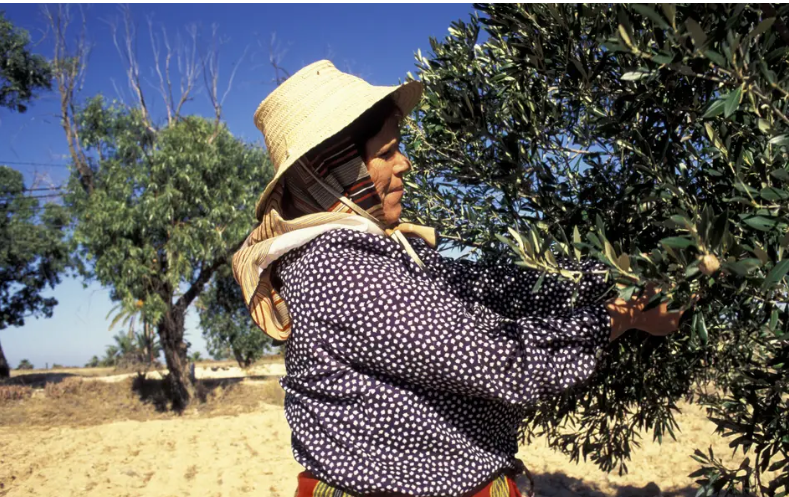Kivomo is a beautiful village in the northern Gisaba district in Rwanda. The small community boasts 196 homes and 876 people. With extremely low incomes, most of the local population works in agriculture, growing and selling mostly beans, maize, and nuts. 30 homes in the village have been connected to electricity through solar home systems (SHS) in the past year by Ignite Power.
“Before getting the light, we used pricy batteries-operated torches”, says Nyirarukundo Esperance, 43, the village leader. “People went to sleep with the sunset, students didn’t have time to study and income was extremely low because we had no time to process and sort our yields”. With 30 households connected, change is already beginning to shape the small community. “Now kids are studying, getting good grades at school, and families are much happier. Women are able to cook at night, and families save money that they once spent on torches and batteries, because solar is much cheaper”.
Although massive efforts and resources are allocated towards the electrification and general infrastructural development of rural sub-Saharan Africa, gaps remain vast. According to McKinsey, more than two-thirds of the global population without electricity is in sub-Saharan Africa, some 600 million people, and electrification pace is the slowest in the world.

India, for example, expanded access to electricity to an additional 100 million people in 2018. In contrast, sub-Saharan Africa only expanded access to 20 million people. Given the massive population growth rates, McKinsey also forecasts that African demand for electricity will quadruple from 2010 to 2040.
Albeit the global focus, the allocation of funds, and private companies taking over the sector, rural Africa remains the least connected area in the world, as challenges still outweigh solutions.
The Last-mile Divide
Across Africa, rural areas are historically underserved, for various geographical and political reasons. Some of the reasons are strictly financial: low population densities result in high capital and operating costs, while delivering last-mile grid connections is complex and financially / logistically challenging. It is estimated that the average international cost to the last mile for any manufacturer works to about 28 percent of the total cost of the product. But within Africa, this cost spirals to 35-55 percent, resulting from issues such as weak infrastructure, limited delivery options, and poor supply chain analytics.
With limited resources and extremely high operational costs, utility companies across the continent are struggling to keep their grid afloat and finance upgrades and essential maintenance of their existing systems. According to the World Bank, Africa’s utility quasi-fiscal can average 1.5% of GDP – while three countries topped 5%, meaning efforts to reach every village and every household are hampered.
The continent’s rural populations are some of the poorest in the world, and the lack of energy access and other basic utilities lead to living conditions remaining at the lowest subsistence level. The lack of financial resources affects people’s ability to pay for electricity, while newly connected customers often use little power and are likely to be served at the lowest tariff, affecting the suppliers’ profitability and, hence, quality and reliability of service. It also poses a financial risk for investors, reducing the incentive to extend the grid and making it difficult to attract private sector investment. Weak infrastructure in Africa’s last-mile, rural communities has vast effects, as it maintains existing social and economical structures, preventing real advancements from taking place. Seeking a brighter, more promising future, millions of rural inhabitants move to Africa’s ever-growing cities.
The Fastest Urbanization in the World
Africa’s projected urban growth rate is astronomical. By 2050, the continent’s cities will be home to an additional 950 million people. In 1950, most African countries were agrarian societies, and only eight countries had an urbanization level above 20 percent. In 2010, 47 Africa countries were over the 20 percent threshold, and the number of countries above 50 percent urbanization more than doubled. At a growing rate of 65 million urban dwellers annually, Sub-Saharan Africa (SSA) is the world’s fastest urbanizing region. Urban areas currently contain 472 million people, and are expected to double over the next 25 years, and urban dwellers will outweigh rural residents for the first time.
At a growing rate of 65 million urban dwellers annually, Sub-Saharan Africa (SSA) is the world’s fastest urbanizing region.
SSA is experiencing an annual urban population growth rate of 4.1 percent, compared with a global 2 percent average. These urban agglomerations are developing without the benefit of policies or investments able to meet the infrastructure challenges that such big settlements demand. The continent requires $90-$150 billion annually to fund infrastructure needs, and according to the African Development Bank, two-thirds of the investments in urban infrastructure required by 2050 have yet to be made.
So how is that any different from the investment gap in rural areas? Well, African cities have a much bigger role in local economies.

SSA’s 143 cities generate a combined $ 0.5 trillion, totaling 50 percent of the region’s gross domestic product (GDP), and many SSA economies are concentrated, and even reliant, on the productivity of their urban centers. These centers play a critical role in fighting poverty and sustaining economic growth, often considered the future of prosperity in the developing continent. In fact, it is very rare to transition from a low-income country (LIC) status to a middle-income country (MIC) status without first going through a process of urbanization.
These urban agglomerations are developing without the benefit of policies or investments able to meet the infrastructure challenges that such big settlements demand.
Yet, the current situation encompasses many urban areas in SSA that are ill-equipped to mitigate the various risks associated with unmanaged urbanization. Without improved infrastructure and services that meet the needs of the growing urban population, negative repercussions are bound to arise, and various countries across the region are already witnessing negative per capita income growth, weak investment, and a decline in productivity.
There is no doubt that urbanization management efforts must be linked to different stakeholders, and the ever-increasing process has to be utilized as an opportunity for growth. But alongside the needed investment, rural areas must not be forgotten. Even more so, they must be put center stage, as further growth of rural communities can help curb the urbanization curve.
Investing in Rural Infrastructure to Even Out Urbanization Rates
Rural areas across Africa present the greatest opportunity for impact and prosperity, as well as a real chance to mitigate the massive urbanization rates. If rural communities finally get the infrastructure they need and deserve, entire families could choose to continue their lives and prosper in their familiar surroundings, while financial constraints they currently face could be lifted.
Rural areas across Africa present the greatest opportunity for impact and prosperity, as well as a real chance to mitigate the massive urbanization rates.
The only road toward implementing proper utilities in last-mile, rural areas across SSA goes through the newly-established distributed infrastructure sector. With affordability, scalability, and a stand-alone aspect, distributed infrastructure solutions are taking the continent by storm. Off-grid solar systems and mini grids are becoming the go-to answer for electricity, gas balloons are already prominent in clean cooking, satellite-based stand-alone solutions are replacing costly fiber-based broadband, and off-grid pumps are replacing national water pipes. All these products embody the core needs of African governments and rural communities alike, as they answer the various problems presented by national grid solutions.
According to the International Energy Agency (IEA), reaching the global “electricity for all by 2030” target would require annual investment of $52 billion per year and the majority will have to be directed to sub-Saharan Africa. Specifically, microgrids would require a total investment of $187 billion, while electrification efforts using off-grid systems and grid expansion require $90 billion and $114 billion. By focusing on the off-grid solutions, that cost could be cut by half.
To foster rural development and adequate living conditions for the rural population, as well as curbing urbanization rates, distributed infrastructure solutions must become the go-to solution for governments across the continent. It is the only way to promote real financial growth, while establishing an inclusive reality for all.
Courtesy: Impact Entrepreneur





















